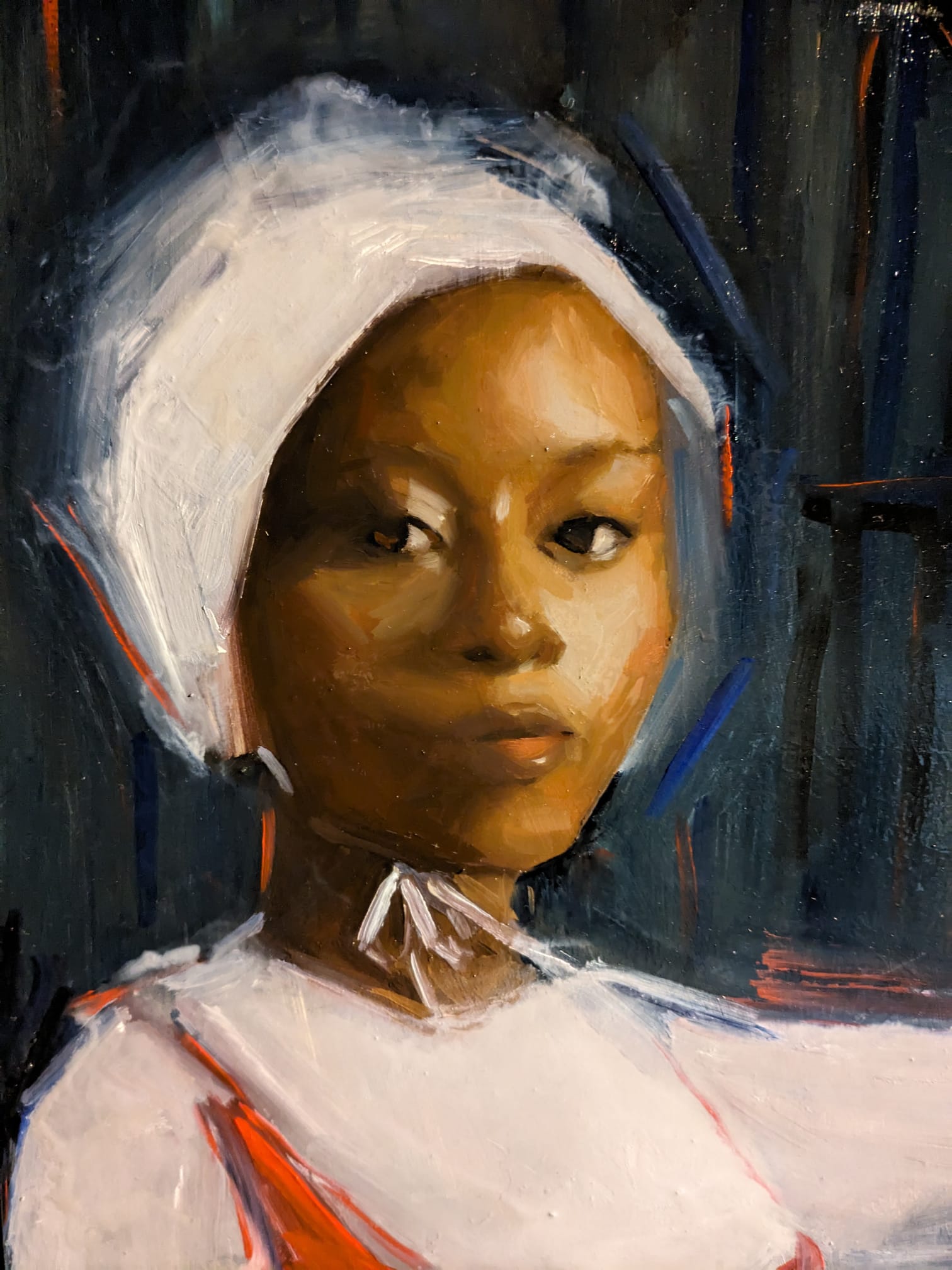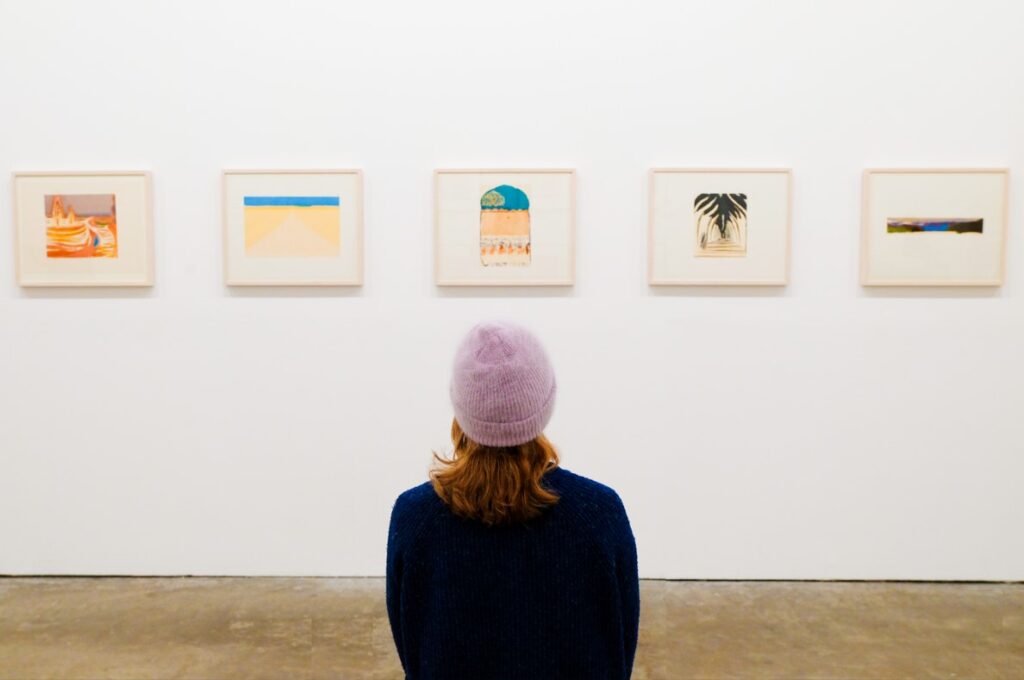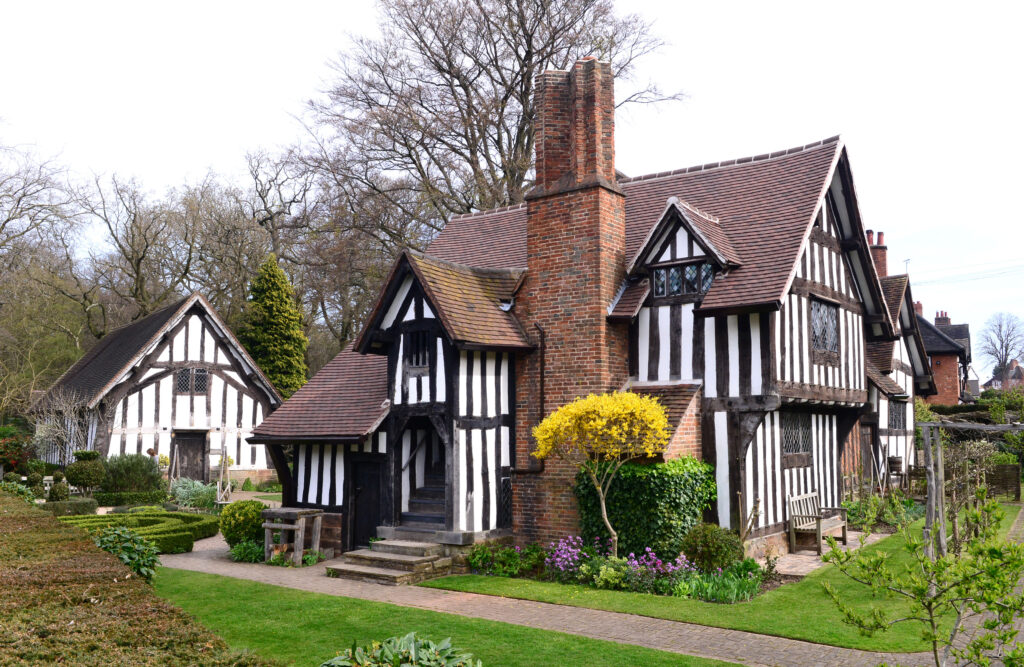
Although more than 200 Black Tudors lived in England, you wouldn’t believe it according to art history. Black visual presence is lacking, with only one known image of John Blanke, a royal trumpeter, included on a manuscript. However, sharing new narratives, Birmingham’s Selly Manor has commissioned four local artists to insert the untold stories of Black Tudors into the frame.
It was the image of John Blanke that first inspired Selly Manor to “want to exhibit artworks of Black Tudors”, including those seen as marginal in the conventional view of history; those who weren’t enslaved to great white men, but lived more ordinary lives.
Thanks to archival sources and the work of historians such as Miranda Kaufmann, we know that slavery was not the only beginning of Africans’ presence in England. By the 15th century, Black Tudors lived and worked in the royal courts of King Henry VIII and Queen Elizabeth I, while others had careers as traders, musicians, chefs and skilled craftspeople.
Located in historic Bournville, Selly Manor is typical of the type of building most Tudors would have lived in, making it the ideal backdrop to explore their experiences. Seeking “to paint a true picture of Tudor England, it’s important that the stories of Black Tudors are explored and represented”, says the museum’s Heritage Engagement Officer, Louise Deakin.
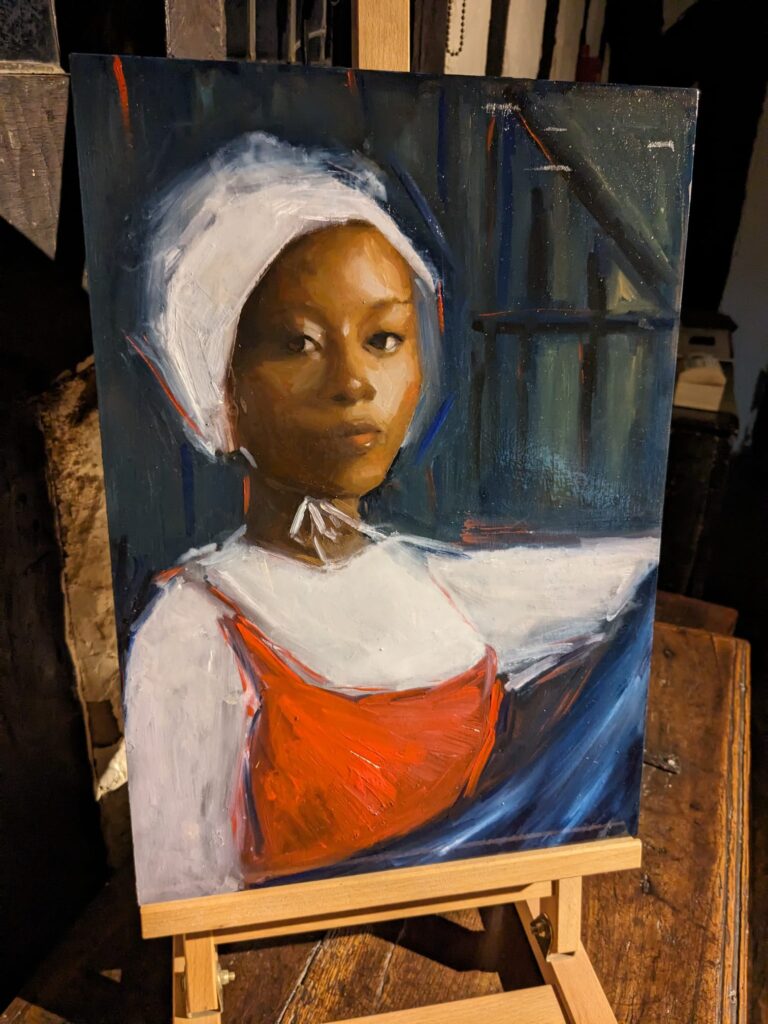
Among those represented is Moroccan-born Mary Fillis, who became a skilled dressmaker in Tudor Britain. Driven by her desire for autonomy, she was a powerful woman, as represented in her portrait by Jade Eynon, who comments:
“Participating in this project is an honour as I can play a part in increasing public knowledge of the role Black Britons have played. Having studied art history at college and university, I’m aware of how little representation there is of Black people in Tudor art and how this erases them from history.”
Full of life, Mary Follis is stretching material in one hand, while she holds the viewer’s gaze directly with her own, asking to be seen on her own terms. Painted in intense colours, with light falling on her face and white cap, there’s a quiet confidence and Vermeer-like quality to this artist’s Black muse.
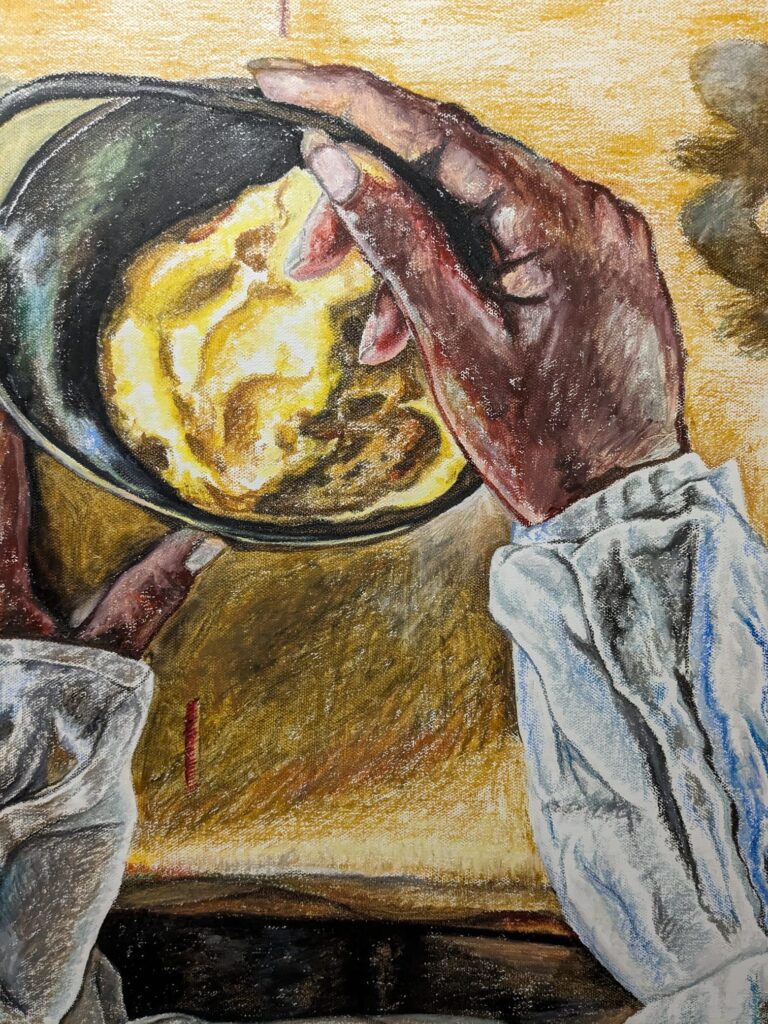
Likewise, Annie Pearson has depicted the agency of independent singlewoman, Cattelena of Almondsbury. Choosing to focus entirely on her hands, with which she is holding a dish of butter, the artist shows viewers that this woman made a living by selling dairy products, framing the more rural experiences of some Black Tudors.
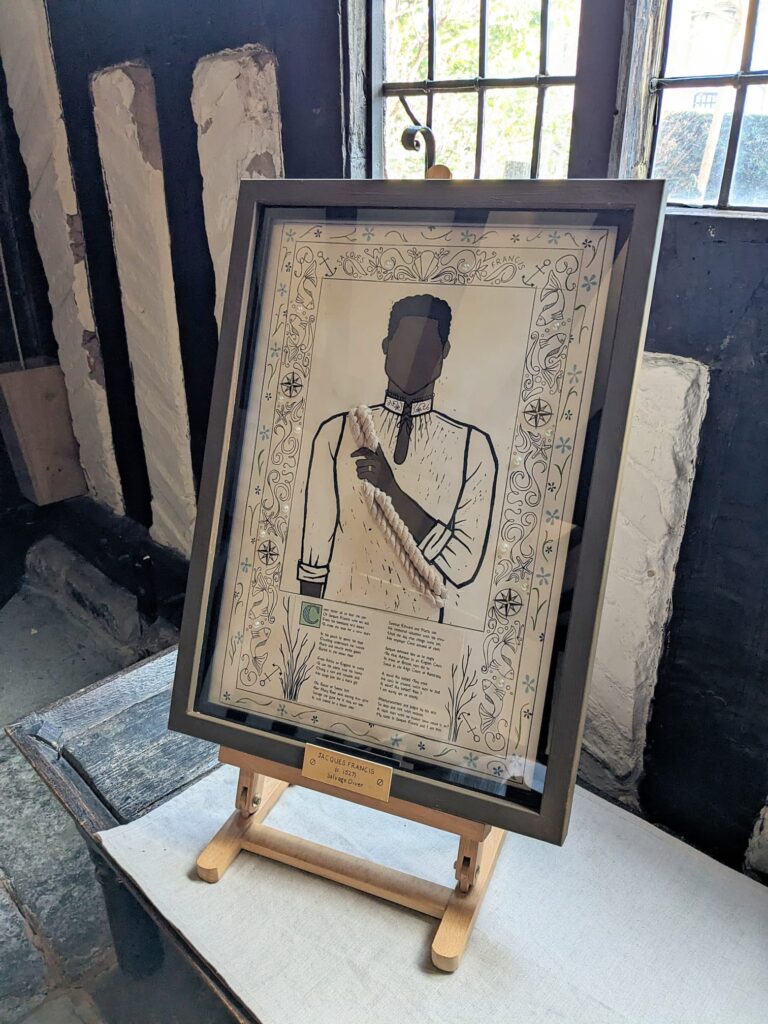
Jacques Francis, meanwhile, is the subject of Nina-Simone Brown. In an illustrative, mixed media composition, she has paid tribute to the specialist diver who salvaged valuables from shipwrecks. Framing him with a nautical border, decorated in shining pearls, the artist has celebrated his skill. At the same time, she has rendered his face featureless, pointing to his previous erasure from visual histories, meaning that we cannot know what he really looked like.
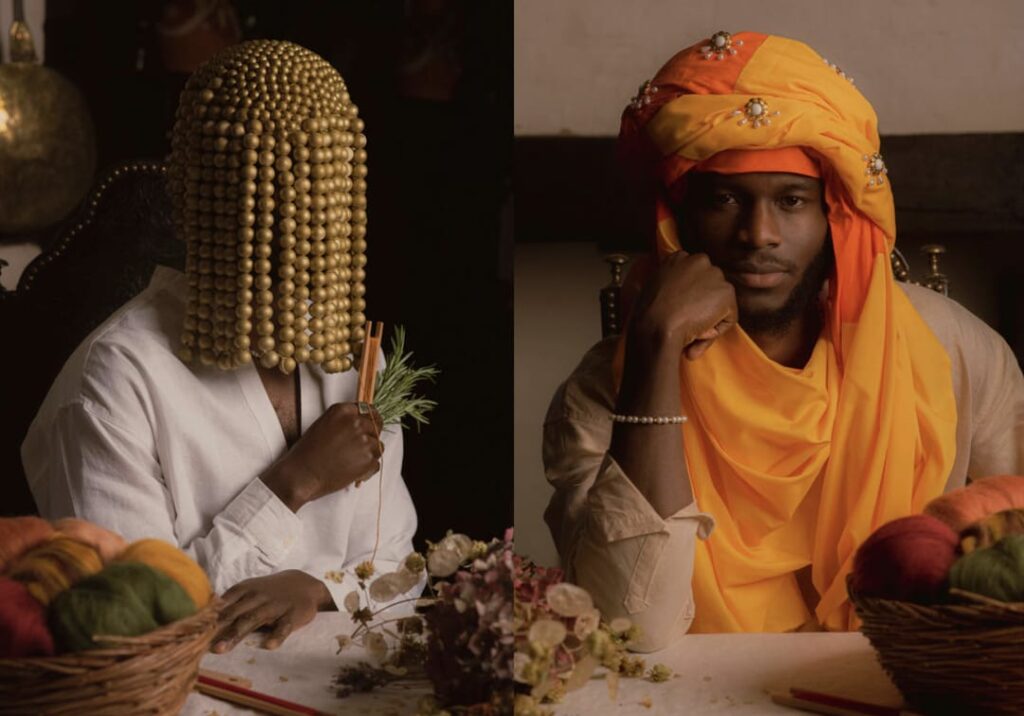
Portrayed in a more playful and theatrical pair of photographs is the successful silk weaver, Reasonable Blackman. A contemporary model has dressed up as him twice, wearing a beaded headdress which completely covers his face in the first image, while in the second, he stares out at the viewer, framed by a gleaming, bright orange turban.
This work’s artist, Nompumelelo Ncube, who is also a photojournalist and public historian, has said: “Being part of this project is an opportunity to get stuck into the things I love; storytelling, fashion and bringing visibility to a historical figure that has been forgotten.”
Her colourful, fashion-focused images are suggestive of the fact that Reasonable Blackman likely made costumes for London theatres. While celebratory in tone, the deliberate concealment of her subject’s face in one image points to the absence of Black Tudors throughout art history, a theme which runs throughout this exhibition. What we don’t see is just as poignant as what we are shown.
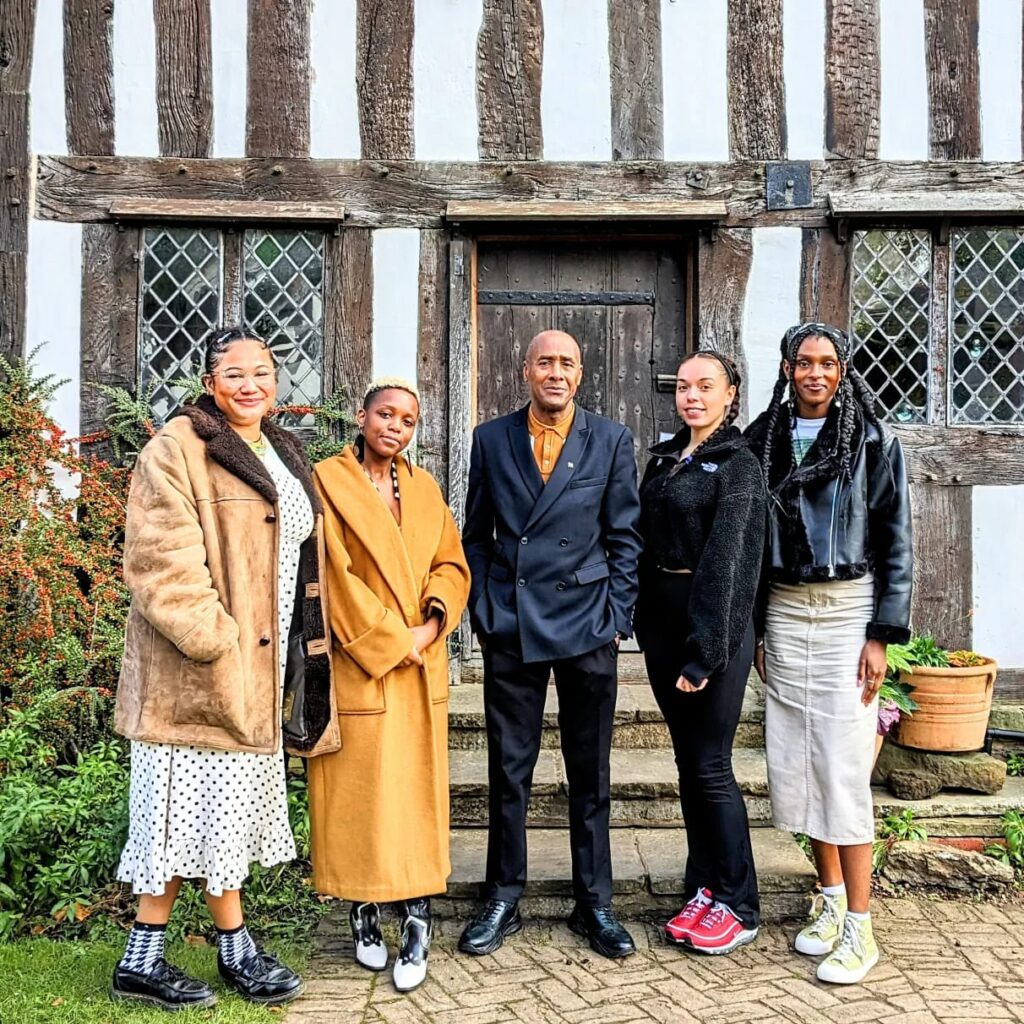
This same theme has been a preoccupation for established artist and photographer, Dr Pogus Caesar, who delivered a development session at Selly Manor Museum as part of the commission. Inspired by this time with Caesar, Ncube has reflected, “The advice he gave us will stay with me throughout my career”.
Caesar also found the workshop enlightening: “What inspired me was the tremendous vigour, strength and individualism that came forth from the artists. I highly anticipate seeing their representation of Black Tudors from a 2024 perspective.”
Re-inserting Black Tudors back into art history with this commission, Selly Manor has given an important to platform to unrepresented voices. The artists will also be joined by Amanda Hemmings, who has written a poem especially for the exhibition, which points to need for more representation of Black Tudors, who lived both extraordinary and ordinary lives.
To accompany the Black Tudors: New Narratives exhibition, families are invited to take part in a children’s trail, storytelling, ‘Zine craft activity, and printing workshops for February half-term. See website for full details: sellymanormuseum.org.uk
